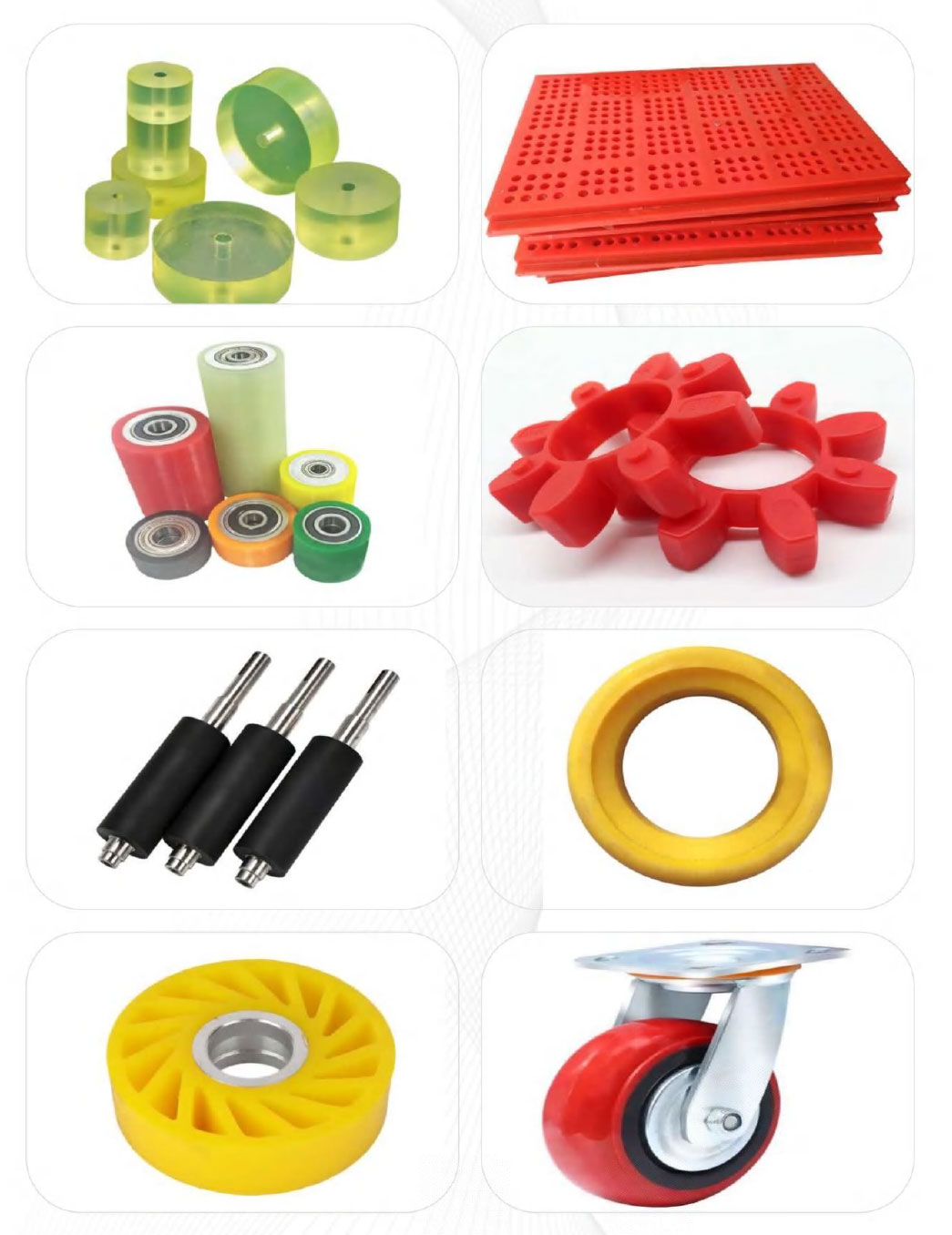Temperature-Resistant Prepolymers

Index | K1245 | K1260 | K1265 |
NCO Content (%) | 4.5±0.2 | 6.0±0.2 | 6.5±0.2 |
Operating Conditions | |||
Ratio (Poly: Curing agent) | 100:12.88 | 100:17.17 | 100:18.60 |
Prepolymer Temp (°C) | 85 | 80 | 75 |
Curing Agent Temp (°C) | 115 | 115 | 115 |
Mold Temp (°C) | 100-110 | 100-110 | 100-110 |
Pot Life (min) | 14-18 | 5-7 | 2-4 |
After Cure (h/100°C) | 16-24 | 16-24 | 16-24 |
Physical Performance | |||
Shore Hardness (A) | 85±2 | 92±2 | 94±2 |
100% Modulus (MPa) | 6-8 | 7-9 | 8-10 |
300% Modulus (MPa) | 12-15 | 14-18 | 17-20 |
Ultimate Elongation (%) | 400-450 | 380-440 | 350-400 |
Tensile Strength (MPa) | 38-42 | 40-45 | 43-48 |
Tear Strength (without Nick) (KN/m) | 80-95 | 90-100 | 100-110 |
Resilience (%) | 45-50 | 42-46 | 35-38 |
DIN Abrasion (mm³) | 35-38 | 38-40 | 40-42 |
Density (25℃) (g/cm³) | 1.17 | 1.17 | 1.18 |

Temperature-Resistant Prepolymers are specially formulated polyurethane prepolymers designed to withstand extreme temperatures, both high and low, without losing their mechanical or chemical properties. These prepolymers are typically based on advanced isocyanates such as MDI (Methylene Diphenyl Diisocyanate) or TDI (Toluene Diisocyanate), combined with polyols that provide enhanced thermal stability. Temperature-resistant prepolymers are essential in applications where polyurethane materials are exposed to fluctuating or extreme temperatures, offering durability, flexibility, and resistance to thermal degradation.
Key Features:
· High-Temperature Stability: These prepolymers maintain their structural integrity and performance at elevated temperatures, preventing softening or degradation.
· Low-Temperature Flexibility: They remain flexible and do not become brittle at low temperatures, ideal for cold environments.
· Thermal Aging Resistance: Their long-term resistance to thermal aging ensures extended service life under constant temperature fluctuations.
Applications of Temperature-Resistant Prepolymers:
1. Industrial Seals and Gaskets: Used in high-temperature machinery, engines, and processing equipment, these seals and gaskets maintain their functionality under extreme heat.
2. Automotive and Aerospace Components: Essential in the production of engine mounts, bushings, and other components exposed to heat, such as under-the-hood parts.
3. Wheels and Rollers: Temperature-resistant prepolymers are used in heavy-duty wheels and rollers in industries like steel manufacturing, where heat resistance is critical.
4. Electrical Insulation: In applications requiring resistance to both heat and electrical stress, these prepolymers ensure insulation performance without degradation.
5. Adhesives and Coatings: Used in environments exposed to high heat, such as metal processing and industrial coatings, where thermal stability is crucial.
In summary, temperature-resistant prepolymers provide reliability and durability across industries where materials must endure extreme or fluctuating temperatures without compromising performance.
